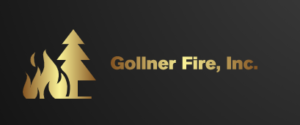Paper on Upward Flame Spread Over Corrugated Cardboard Published in Combustion and Flame
Our recent work on flame spread over corrugated cardboard, with applications related to warehouses has been published in the journal Combustion and Flame. Check out the article and abstract below: http://dx.doi.org/10.1016/j.combustflame.2010.12.005
Upward flame spread over corrugated cardboard
M.J. Gollner, F.A. Williams and A.S. Rangwala
As part of a study of the combustion of boxes of commodities, rates of upward flame spread during early-stage burning were observed during experiments on wide samples of corrugated cardboard. The rate of spread of the flame front, defined by the burning pyrolysis region, was determined by visually averaging the pyrolysis front position across the fuel surface. The resulting best fit produced a power-law progression of the pyrolysis front, xp = At^n, where xp is the average height of the pyrolysis front at time t, n = 3/2, and A is a constant. This result corresponds to a slower acceleration than was obtained in previous measurements and theories (e.g. n = 2), an observation which suggests that development of an alternative description of the upward flame spread rate over wide, inhomogeneous materials may be worth studying for applications such as warehouse fires. Based upon the experimental results and overall conservation principles it is hypothesized that the non-homogeneity of the cardboard helped to reduce the acceleration of the upward spread rates by physically disrupting flow in the boundary layer close to the vertical surface and thereby modifying heating rates of the solid fuel above the pyrolysis region. As a result of this phenomena, a distinct difference was observed between scalings of peak flame heights, or maximum “flame tip” measurements and the average location of the flame. The results yield alternative scalings that may be better applicable to some situations encountered in practice in warehouse fires.
default